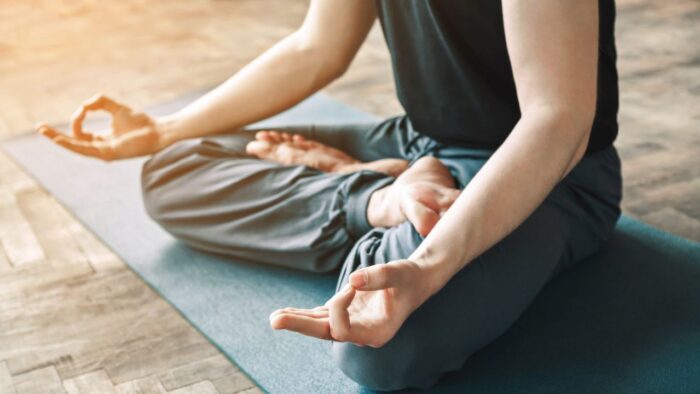In the pursuit of physical and mental well-being, individuals have a plethora of options, ranging from traditional practices like yoga to modern-day exercise routines. While both traditional yoga and modern-day exercising offer numerous benefits, they differ significantly in their approaches, philosophies, and outcomes. In this blog, we'll explore the distinctions between traditional yoga and modern-day exercising, highlighting their respective strengths and how they contribute to overall wellness.
Traditional Yoga: Cultivating Mind-Body Harmony
Traditional yoga is an ancient practice that originated in India thousands of years ago. Rooted in spiritual and philosophical traditions, yoga aims to unite the mind, body, and spirit through a combination of physical postures (asanas), breath control (pranayama), and meditation (dhyana). The primary goal of traditional yoga is to cultivate inner peace, balance, and self-awareness, fostering a holistic approach to health and well-being.
Exploring the Tapestry of Traditional Yoga: A Journey Through Different Types
Traditional yoga is a vast and diverse discipline that encompasses a myriad of practices, each with its own unique philosophy, techniques, and benefits. From gentle and meditative styles to dynamic and physically demanding forms, the world of traditional yoga offers something for everyone. In this blog, we embark on a journey through the rich tapestry of traditional yoga, exploring some of the most prominent types and their distinctive characteristics.
Hatha Yoga: The Foundation of Physical Practice
Hatha yoga is one of the most widely practiced forms of traditional yoga, known for its emphasis on physical postures (asanas) and breath control (pranayama). Rooted in ancient texts such as the Hatha Yoga Pradipika, this foundational practice aims to balance and align the body, mind, and spirit through a series of gentle stretching, strengthening, and relaxation exercises.
Key Features:
Focus on alignment, flexibility, and strength
Integration of breath work and relaxation techniques
Suitable for beginners and experienced practitioners alike
Vinyasa Yoga: Flowing Movement and Breath
Vinyasa yoga is a dynamic and fluid style of traditional yoga that synchronizes movement with breath in a continuous flowing sequence. Inspired by the Ashtanga Vinyasa system, this practice emphasizes smooth transitions between poses, creating a moving meditation that builds strength, flexibility, and cardiovascular endurance.
Key Features:
Creative and dynamic sequences of poses
Emphasis on linking breath with movement
Cultivation of mindfulness and presence on the mat
Ashtanga Yoga: The Eight-Limbed Path
Ashtanga yoga is a rigorous and disciplined form of traditional yoga that follows the eight-limbed path outlined in Patanjali's Yoga Sutras. This systematic practice consists of a predefined series of poses, practiced in a specific sequence with synchronized breath and movement. Ashtanga yoga is often characterized by its intense physical exertion and emphasis on self-discipline and spiritual growth.
Key Features:
Structured series of poses (Primary Series, Intermediate Series, etc.)
Focus on building strength, flexibility, and endurance
Integration of breath control (ujjayi pranayama) and gazing points (drishti)
Kundalini Yoga: Awakening the Inner Energy
Kundalini yoga is a transformative and spiritually-oriented practice that focuses on awakening the dormant energy (kundalini) at the base of the spine. Drawing from ancient tantric teachings, this dynamic practice incorporates a blend of physical postures, breath work, chanting, and meditation techniques to awaken and channel the flow of energy through the body's energy centers (chakras).
Key Features:
Emphasis on breath work (pranayama) and mantra chanting (japa)
Dynamic and repetitive movements (kriyas) to stimulate energy flow
Cultivation of self-awareness, intuition, and spiritual connection
The world of traditional yoga is vast and multifaceted, offering a diverse array of practices to suit the needs and preferences of practitioners at every level. Whether you're drawn to the gentle stretching of Hatha yoga, the flowing movement of Vinyasa yoga, the disciplined structure of Ashtanga yoga, or the transformative energy work of Kundalini yoga, there is a traditional yoga practice waiting to be explored. By embracing diversity in traditional yoga, practitioners can embark on a journey of self-discovery, wellness, and spiritual growth that transcends boundaries and cultivates harmony in mind, body, and spirit.
Modern-Day Exercising: Fitness for the Body and Mind
In contrast to traditional yoga, modern-day exercising encompasses a diverse range of physical fitness activities and routines, including cardiovascular exercises, strength training, high-intensity interval training (HIIT), and more. While modern-day exercising prioritizes physical fitness and performance, it also acknowledges the interconnectedness of physical and mental well-being, often incorporating elements of mindfulness and stress reduction into workout routines.
Exploring the Diversity of Modern-Day Exercising: A Guide to Different Types
In the modern era, the landscape of fitness and exercise has evolved dramatically, offering a wide array of options to suit diverse preferences, goals, and lifestyles. From high-intensity workouts to mindful movement practices, modern-day exercising encompasses a rich tapestry of approaches that cater to individuals of all fitness levels and interests. In this blog, we'll embark on a journey through the diverse world of modern-day exercising, exploring some of the most prominent types and their unique characteristics.
High-Intensity Interval Training (HIIT): Maximizing Efficiency and Results
High-Intensity Interval Training (HIIT) has gained popularity in recent years for its effectiveness in burning calories, boosting metabolism, and improving cardiovascular health in a short amount of time. This form of exercise alternates between intense bursts of activity and brief periods of rest or low-intensity recovery, challenging both aerobic and anaerobic fitness.
Key Features:
Short, intense workouts typically lasting 20-30 minutes
Varied exercises such as sprints, jumping jacks, burpees, and kettlebell swings
Benefits include increased calorie burn, improved endurance, and enhanced metabolic rate
CrossFit: Functional Fitness for All
CrossFit is a high-intensity strength and conditioning program that emphasizes functional movements performed at high intensity. Incorporating elements of weightlifting, gymnastics, and cardiovascular exercise, CrossFit workouts are designed to improve overall physical fitness and performance across a broad range of domains.
Key Features:
Varied workouts that combine weightlifting, bodyweight exercises, and metabolic conditioning
Emphasis on intensity, scalability, and community support
Focus on functional movements that translate to real-life activities and sports
Pilates: Strengthening the Core and Mind-Body Connection
Pilates is a low-impact exercise method that focuses on strengthening the core muscles, improving flexibility, and enhancing body awareness and alignment. Developed by Joseph Pilates in the early 20th century, Pilates exercises emphasize controlled movements, proper breathing techniques, and mindful concentration to create a strong and balanced body.
Key Features:
Exercises performed on a mat or specialized equipment such as the reformer, Cadillac, or Wunda chair
Emphasis on core stability, spinal alignment, and muscular control
Benefits include improved posture, flexibility, and overall body strength
Yoga Sculpt: Blending Yoga with Strength Training
Yoga Sculpt is a dynamic and challenging workout that combines traditional yoga poses with strength training exercises and cardio bursts. This hybrid practice offers a full-body workout that builds strength, tones muscles, and improves cardiovascular fitness while maintaining the mindfulness and breath awareness of yoga.
Key Features:
Fusion of yoga poses with light weights, resistance bands, or bodyweight exercises
Incorporation of high-intensity intervals or cardio sequences for added calorie burn
Focus on sculpting and defining muscles while promoting mindfulness and relaxation
The world of modern-day exercising is diverse and dynamic, offering a plethora of options to suit individual preferences, goals, and lifestyles. Whether you're drawn to the intensity of HIIT, the functional fitness of CrossFit, the mindful movement of Pilates, or the hybrid approach of Yoga Sculpt, there is a modern-day exercise practice waiting to be explored. By embracing diversity in modern-day exercising, individuals can discover new ways to challenge their bodies, enhance their fitness, and achieve their wellness goals, ultimately leading to a healthier, happier, and more vibrant life.
Finding Balance: Integrating Traditional Yoga and Modern-Day Exercising
While traditional yoga and modern-day exercising offer distinct approaches to health and wellness, they are not mutually exclusive. In fact, finding balance between these two practices can lead to a more comprehensive and sustainable approach to overall well-being.
Incorporating yoga into a modern-day exercise routine can enhance flexibility, balance, and mental focus, while providing an opportunity for relaxation and stress relief.
Integrating elements of modern-day exercising, such as cardiovascular workouts and strength training, can complement traditional yoga practice by improving physical fitness, endurance, and muscle tone.
Ultimately, the key lies in listening to your body and honoring your individual needs and preferences. Whether you choose to practice traditional yoga, engage in modern-day exercising, or combine elements of both, the most important thing is to cultivate a sustainable and balanced approach to health and wellness that nourishes your mind, body, and spirit.
In the journey towards optimal health and well-being, traditional yoga and modern-day exercising offer unique pathways, each with its own set of benefits and principles. By understanding the distinctions between these practices and finding a balance that works for you, you can cultivate a holistic approach to wellness that addresses the needs of your mind, body, and spirit. Whether you prefer the mindful introspection of traditional yoga or the dynamic intensity of modern-day exercising, embracing diversity in wellness practices is key to achieving balance, vitality, and harmony in your life.





